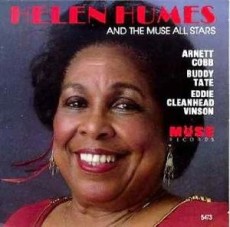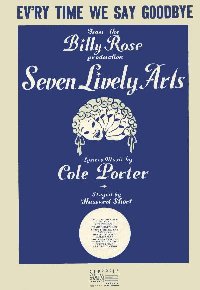
Daily Dose Of Jazz…
Jazz and blues singer Helen Humes was born on June 23, 1913 in Louisville, Kentucky. As a teenager she was a blues singer, band vocalist with Count Basie, a saucy R&B diva and a mature interpreter of the classy pop song.
Humes made her gramophone record debut in 1927 after being spotted by guitarist Sylvester Weaver. Moving to New York City in 1937 she became a recording vocalist with Harry James’ big band, then replaced Billie Holiday as the voice of the Count Basie Orchestra in 1938. During the 1940s and 1950s, she turned solo performer and worked with different bands and other vocalists including Nat King Cole.
In 1950 Helen recorded Benny Carter’s “Rock Me to Sleep”. She managed to bridge the gap between big band jazz swing and rhythm and blues. She appeared at the 1960 Monterey Jazz Festival with a styling reminiscent of Dinah Washington. Moving to Hawaii, then to Australia in 1964, she returned to the U.S. in 1967 to care for her ailing mother leaving the music industry for several years.
Vocalist Helen Humes received the key to the city of Louisville, the Music Industry of France Award and made a full comeback in 1973 at the Newport Jazz Festival and stayed busy until her passing from cancer at age 68 on September 9, 1981 in Santa Monica, California.
More Posts: vocal

From Broadway To 52nd Street
Seven Lively Arts opened at the Ziegfeld Theatre on December 7, 1944 and the curtain rose for 183 performances. Billy Rose produced the show, hiring Cole Porter to compose the music that spawned the jazz standard Ev’ry Time We Say Goodbye.
The Story: The musical featured eleven sketches such as Local Boy Makes Good, Pas de Deux and Heaven On Angel Street. The short-list of actors included Beatrice Lillie, Bert Lahr, Alicia Markova and Doc Rockwell. They are augmented with the talents of jazz notables Teddy Wilson, Red Norvo and Benny Goodman.
Broadway History: By the Mid 40s most theaters on Broadway that had been a good investment and a symbol of vivacity and mirth from the turn of the century were now considered uneconomical. Increasing real estate values was forcing the theaters into obsolescence, turning them into film house to accommodate the takeover by movies. A second threat during this period in the competition for audience was the emergence of television, which was providing free entertainment. The result of these two industries was a shocking 80% unemployment rate for Broadway actors in 1948, and for the first time in its history, Broadway had to call a general emergency meeting for all unions and theater people.
Sponsored By
www.whatissuitetabu.com

Daily Dose Of Jazz…
Eumir Deodato was born Eumir Deodato de Almeida on June 22, 1943 in Rio de Janiero of Italian and Portuguese parents. He began his musical training at twelve on the accordion but rapidly learned instrumental and orchestral skills that gave him his first recording session at 17.
Originally working as pianist and arranger in the Rio bossa nova scene, he rapidly outgrew this and, along with many other Brazilian musicians during the military dictatorshipin their country, moved to New York and began working with composer Luis Bonfa and later with producer Creed Taylor as an arranger. Additionally, he became keyboardist in Taylor’s expanding group of CTI backing artists.
His first U.S. album “Prelude” released in 1973 for CTI was a big band Latin jazz project that immediately attracted a wide audience. His funky version of Also Sprach Zarathustra won him the 1974 Grammy for Best Pop Instrumental Performance and hitting #2 on the charts.
Deodato has been in demand as a producer and arranger since the 1960s. In all, he has worked on more than 500 albums, fifteen of which have reached platinum. His skills as an arranger provided entree to the American recording industry, writing charts for Wes Montgomery, Astrud Gilberto, Frank Sinatra, Bjork, k.d. lang and Kool and the Gang among others.
He has scored several films over his career and recorded a live album in Rio in 2007. He continues to produce and arrange.
More Posts: piano

Daily Dose Of Jazz…
Eric Reed was born in Philadelphia, Pennsylvania on June 21, 1970 and began playing piano at age two, transitioning into his minister father’s church at five and at seven began formal study at the Philadelphia Settlement Music School. By the time he was 11 his family was moving to Los Angeles where he studied at the Colburn School of Arts.
In 1986 his encounter with Wynton Marsalis would greatly aid his career beginning with him joining his septet in 1990 and over the next five years he would work with Wynton along with Joe Henderson and Freddie Hubbard. In 1996 he joined the Lincoln Center Jazz Orchestra and towards the end of the decade he was venturing out to lead his own group, Black Note, that released several albums during the 1990s.
Eric has worked with jazz luminaries such as Irvin Mayfield, Cassandra Wilson, Mary Stallings, Clark Terry, Dianne Reeves, Elvin Jones, Ron Carter, Paula West and Benny Carter.
Eric has also worked as a composer, scoring music for independent and mainstream films, including the comedy ‘Life’, featuring Eddie Murphy and Martin Lawrence. With nearly two dozen albums under his belt, he most recently recorded his Monk project, having already released The Dancing Monk in 2011 and The Baddest Monk in 2012 with an audience anticipation of the final recording as he continues to perform, tour and record.
More Posts: piano

Daily Dose Of Jazz…
Eric Allan Dolphy was born on June 20, 1928 in Los Angeles, California and received his musical education at Los Angeles City College. Performing locally in the big bands of Gerald Wilson and Roy Porter, he played soprano clarinet, baritone saxophone and his main instrument, the alto, on early recordings. But his big break came when he joined Chico Hamilton’s quintet, gaining wider audience recognition.
By 1959 Dolphy had moved to New York City and his early association with then established John Coltrane brought him acclaim amongst jazz lovers. During this period, Dolphy also played in a number of challenging settings, notably in key recordings by Ornette Coleman’s Free Jazz: A Collective Improvisation; Oliver Nelson’s The Blues and the Abstract Truth; and George Russell’s Ezz-thetics. He also worked with Max Roach, Gunther Schuller, Ron Carter, Ken McIntyre and Abbey Lincoln among others.
His first two albums as leader produced Outward Bound and Out There that were deeply rooted in hard bop with trumpeter Freddie Hubbard. This was followed with Far Cry with Booker Little, with whom he would record a series of legendary sets at the Five Spot before Little’s death at 23. In 1964, Dolphy signed with Blue Note and recorded Out To Lunch! with Hubbard, Bobby Hutcherson, Richard Davis and Tony Williams. This record was rooted in the avant-garde, his solos unpredictable and is considered his magnum opus.
Eric Dolphy died in Berlin while touring with Charles Mingus on June 29, 1964. The circumstances are sketchy as to where he died and the cause, though he was a diabetic. Whatever the cause, the jazz world lost an alto saxophonist, flautist, clarinetist who contributed profusely to the genre of jazz during his short-lived 36 years.



